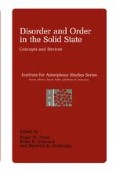Abstract
The first commercial Ovonic threshold switches were discrete devices with carbon electrodes in a DO-7 package. The threshold switching materials used in these devices were originally made for AC application and then adapted for DC operation by material changes such as the addition of selenium to the tellurium-based, stable chalcogenide materials. Threshold switches were successfully made in thin film form for experimental purposes.
In order to make a thin film threshold switch suitable for production processing, since the chalcogenide materials are moisture and oxygen sensitive as in the original devices, passivation and material stabilization techniques needed to be developed.*The development of this thin film device technology required a systems approach which continued the use of carbon electrodes at the glass surface and, at the same time, was amenable to use of photolithographic patterning and dry etching. It required the development of a conformal, inorganic passivation layer. That was achieved, assuring inherent high stability and long life. The switching material in the device has also been modified to incorporate hydrogen, which significantly improves the stability and uniformity of the resulting switches.
As a prototype production process, the new, all-thin-film Ovonic Threshold Switch (OTS) using the hydrogenated chalcogenide material shows device yields as high as 90+ percent. The threshold voltage variability, measured on devices made using the same conditions for individual devices under worst-case AC conditions, is typically less than 10 percent. Threshold voltage variability for the same devices, measured from device to device using the same conditions, is typically less than 5 percent.
The development of this new device technology has resulted in the ability to fabricate high yield, DC-stable, thin film threshold switches with a first-fire voltage that is substantially equal to the final threshold voltage.
Access this chapter
Tax calculation will be finalised at checkout
Purchases are for personal use only
Preview
Unable to display preview. Download preview PDF.
References
N. F. Mott and E. A. Davis, “Electronic Processes in Non-crystalline Materials,” Second Edition, Oxford University Press (1979).
J. M. Ziman, “Models of Disorder,” First Edition, Cambridge University Press (1979).
D. Adler and B. B. Schwartz, Institute for Amorphous Studies Series, Plenum Press (1985 - ).
e.g., J. Appl. Phys.
e.g., IEEE Transactions on Magnetics.
e.g., J. Non-Crystalline Solids.
S. R. Ovshinsky, Phys. Rev. Lett., 21;20:1450 (1968).
D. Adler, H. K. Henisch, N. F. Mott, Rev. Mod. Phys., 50;2:209 (1978)
U.S. Army Medical Corp., SBIR Contract No.DAMD17–8 6-C-6158.
Report on the “First Workshop on Threshold Switching,” U.S. Army Research Office, Workshop Sponsor: C. Beghosian, July 1980.
D. Adler and H. Fritzsche, “Tetrahedrally-Bonded Amorphous Semiconductors,” Institute for Amorphous Studies Series, Plenum Press (1985).
R. W. Pryor, J. Appl. Phys., 52;5:3702 (1981).
R. W. Pryor, IEEE Electron Device Lett., EDL-6;1:31 (1984)
R. W. Pryor, IEEE Electron Device Lett., EDL-6;7:377 (1985)
V. Smidand and H. Fritzsche, Sol. St. Comm., 33;7:735 (1980)
H. Fritzsche, V. Smid, H. Ugur, P. J. Gaczi, J. dePhysique, Colloque C-4, Supplement 10, 42:699 (1981).
Author information
Authors and Affiliations
Editor information
Editors and Affiliations
Rights and permissions
Copyright information
© 1988 Plenum Press, New York
About this chapter
Cite this chapter
Pryor, R.W. (1988). Recent Developments in Ovonic Threshold Switching Device Technology. In: Pryor, R.W., Schwartz, B.B., Ovshinsky, S.R. (eds) Disorder and Order in the Solid State. Institute of Amorphous Studies Series. Springer, Boston, MA. https://doi.org/10.1007/978-1-4613-1027-3_4
Download citation
DOI: https://doi.org/10.1007/978-1-4613-1027-3_4
Publisher Name: Springer, Boston, MA
Print ISBN: 978-1-4612-8299-0
Online ISBN: 978-1-4613-1027-3
eBook Packages: Springer Book Archive

